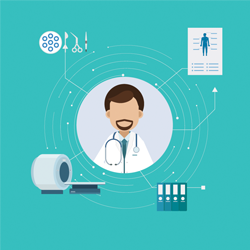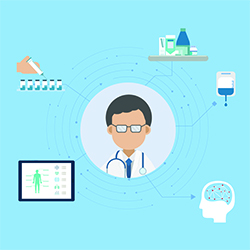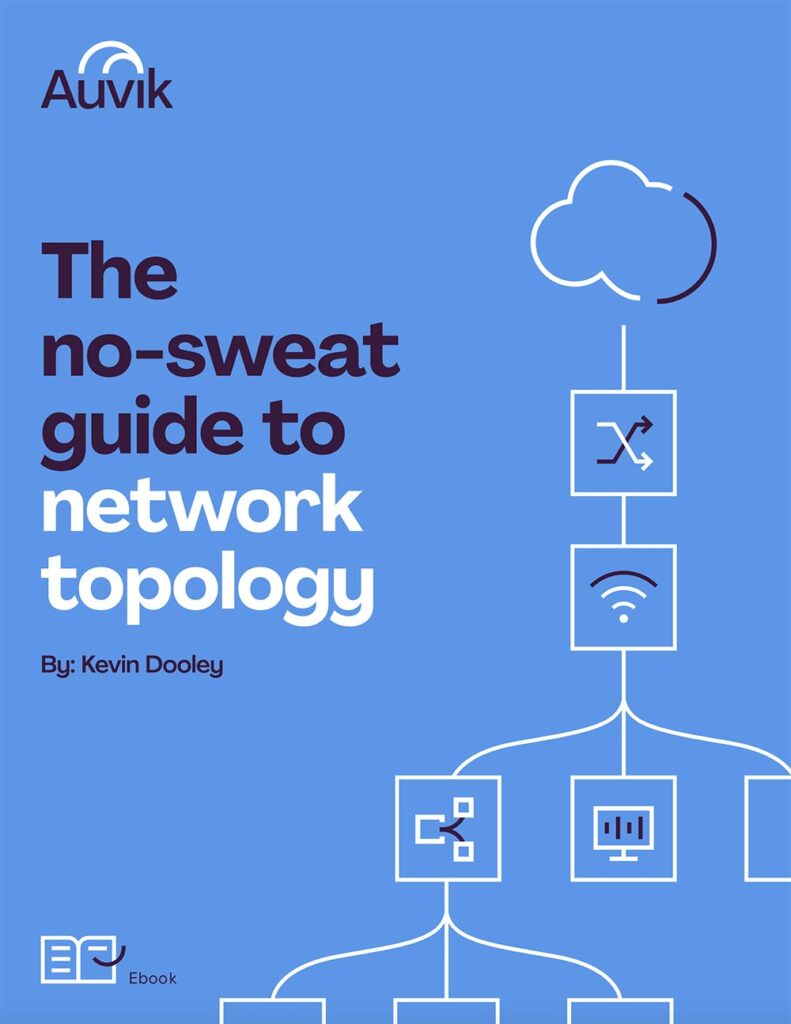Healthcare IT is simultaneously one of the most complex and sensitive networking systems there are. Aside from the wealth of confidential data they process and store, these networks must be highly available to support life-saving procedures and diagnostics programs. This makes proactive healthcare network monitoring—staying ahead of little issues before they become emergencies—an absolute necessity.
Unfortunately, many healthcare organizations still rely on reactive approaches to network monitoring. This can lead to severe consequences, including data breaches, loss of patient confidence, and regulatory fines, beyond the obvious cost of declining patient care quality.
So how can healthcare networks move to a proactive model? Let’s look at benefits and some best practices for implementation.
Recap: Reactive vs proactive network monitoring and management
Reactive network monitoring is the traditional way most organizations approach network management. The main problem with this approach is that it’s… well, reactive. Like a break/fix model, this means they only start looking for problems after something has gone wrong, which means it’s too late to prevent them.
Proactive network monitoring is just the opposite: an ongoing process that helps you identify and fix potential problems before they cause any damage. By constantly monitoring your network for potential issues, you can avoid problems before they happen.
When it comes to healthcare, proactive network monitoring is essential. The stakes are simply too high to wait for something to go wrong before acting.
Why is the healthcare industry stuck in a reactive model?

According to a Ponemon Institute study, the average cost per minute of unplanned downtime is approximately $8,851 per minute for large enterprises and up to $427 per minute for small businesses. In healthcare, the cost of downtime compounds quickly, as loss of availability can mean patients missing vital appointments, losing confidential data, decreased patient satisfaction, and fines from regulatory bodies. So a proactive model just makes sense, right?
In reality, maintaining and overseeing healthcare networks can be very challenging as they are large, often distributed, and feature a wide variety of IoT and legacy devices. Additionally, healthcare organizations interact with millions of patients and records across various devices and applications, generating complex data about application performance, device status, and patient health.
As a result, healthcare network IT teams get stuck behind the eight ball—simply trying to keep up with the constant stream of data and alerts. They’re often forced to wait until an end-user alerts them to an issue or a broader system outage.
This is further complicated by the fact that the legacy of healthcare network monitoring tools only provides visibility into application performance, and doesn’t offer end-to-end views of the network. As a result, IT teams are typically bouncing between tools to try and maintain a complete picture of the network, which further increases their workload.
There is also the issue that many healthcare providers are still using legacy systems that make collecting data challenging, meaning it’s hard to identify potential issues before they cause problems. Add the complexity of managing network performance in cloud and remote environments, and you have a recipe for disaster. In most healthcare settings, for example, it’s more important to have working diagnostic systems (like an MRI) than one that plays nice with your network monitoring software.
Understand the risks of reactive network monitoring and management in healthcare
Wasted resources
Reactive network monitoring can be very resource-intensive, as IT teams must constantly monitor the network for issues. This can lead to decreased productivity and increased costs. It also takes away from time that could be spent on proactive efforts, such as improving the network.
Delayed identification of issues
By the time an issue is identified, it has often already caused significant damage. This can result in patient harm, loss of confidential data, decreased satisfaction, and fines.

For example, if a hospital is not proactive about monitoring its network, it may not identify an issue with its EHR system until patient records are lost or corrupted. The missing information could lead to misdiagnosis or delayed treatment, which could harm the patient.
Increased downtime
If issues are not identified and fixed in time, they can lead to increased downtime, which can significantly impact patient care. Hospitals have many IoT-enabled devices and systems, including life-sustaining equipment, which rely on a stable network connection. When the network goes down, it can have dire consequences.
Increased security risks
Taking a reactive approach to network monitoring can also increase security risks. Hospital networks contain a wealth of confidential data, including patient records and financial information. They are also highly vulnerable to attacks because of the number of devices and systems they contain, many of which are legacy systems meaning they often lack adequate security features.
Another security concern is that hospital networks have a wide range of remote and BYO devices, which can introduce malware and other threats. If a hospital is not proactive about monitoring its network, it may not identify these threats until it’s too late.
The solution: Proactive healthcare network monitoring
It shouldn’t come as much of a surprise that a proactive model brings a lot of additional benefits over waiting for something to go wrong. Some of the benefits of proactive healthcare network monitoring include:
- Total visibility. Whether your network is local or distributed across several sites, with a proactive approach, you drastically increase your network visibility. From one single location, you can see everything happening across your networks, and the devices they are connected to. No more truck rolls and wasted resources.
- Reduced downtime. In healthcare, downtime can be extremely costly, as it can result in catastrophic patient care issues, loss of patient confidence, and potential regulatory fines.
- Increased efficiency. Proactive networking monitoring provides the visibility you need to optimize your network for peak performance. This increased efficiency can lead to better patient care and cost savings.
- Enhanced security. By constantly monitoring your network, you can quickly identify and fix out-of-the-ordinary behavior that may be the first sign of a security vulnerability or an exploit in progress. Data security is of the utmost importance in healthcare, as a data breach can have devastating consequences.
“A surge in network traffic between two endpoints or a user scanning for open ports could be an attack. Similarly, a spike in CPU utilization is a common cryptojacking symptom” – What is Insider Risk?
How can IT teams in this industry step away from being firefighters and move towards proactive network management?
It’s a bit of a catch-22. Healthcare IT teams are running around putting out fires, so they don’t have the time to implement a proactive approach that would reduce the likelihood of issues becoming emergencies and allow for regular maintenance to minimize downtime.
The Auvik 2021 Network Field Report shows that IT professionals spend 48% of their time in reactive mode, meaning they spend almost half their time handling problems as they arise. This leaves very little time for proactive work, such as planning and preventative maintenance.
One solution is to adopt more mature processes and automation to fill in the gaps. This comprises three main steps: documenting, integrating, and automating.
Documentation

Documentation is vital for proactive network management. Without knowing what devices and systems are on the network, what they do, and how they’re interconnected, network management becomes a guessing game.
Step one is to create a network map that documents all devices and systems on the network, as well as how they’re interconnected. This will give you a clear picture of what your network looks like and make it easier to identify potential issues. Some solutions (like Auvik) will automate this process, ensuring always up-to-date topologies.
Step two is to document the configuration of all devices and systems on the network. This includes things like IP addresses, operating system versions, software versions, and patch levels. This information will be critical if you need to troubleshoot an issue or replace a device.
Step three is to document the policies and procedures for managing the network, such as change management, incident response, and security. Having this information documented will help ensure that everyone on the team is on the same page and knows what to do in case of an issue.
With Auvik, healthcare organizations can document their entire networks in minutes using the automated network discovery and mapping, inventory, and documentation tools. It also comes with real-time discovery and updates, so IT teams always have an up-to-date view of their networks.
Integration
Integrating network management and monitoring solutions with existing tools you already use can help make proactive network management more straightforward. Many tools offer APIs in order to link functionality or alerts, allowing teams to not only continue working within software environments they know but extend capabilities of that software with added features.
Software like Auvik, for instance, included dozens of integrations with other common monitoring and management tools. With Auvik features, healthcare organizations can improve their proactive healthcare network monitoring by integrating with their existing tools. From automated network visibility and IT asset management and efficient distributed site management to intelligent network traffic analysis and creating powerful reporting workflows with Auvik’s APIs, the possibilities are endless.
Automation
Automating tasks like network discovery, inventory, and documentation can free up time for IT teams to focus on more strategic initiatives. However, it doesn’t happen overnight. It takes time and diligence to achieve a fully automated network. The trick is to start small and gradually add more automation over time.
Healthcare organizations can start with network inventories, topology maps, and password rotations, as these are typically some of the most time-consuming tasks. They are also functions that are well suited for automation. Subsequently, they can move on to automating other tasks like change management, incident response, and security.
Proactive healthcare network monitoring is a necessity
Proactive healthcare network monitoring is a necessity in today’s complex and ever-changing IT landscape. It will help healthcare organizations reduce downtime, improve the stability of their distributed networks, and ultimately provide better care for their patients.
With the help of tools like Auvik, healthcare providers can overcome the challenges of proactive healthcare network monitoring by creating unified health solutions. Auvik’s features can help automate tedious tasks, improve efficiencies, and keep healthcare organizations’ networks running smoothly. Ready to see what Auvik can do for your healthcare network? Take a risk-free 14-day trial of all our features now.
Your Guide to Selling Managed Network Services
Get templates for network assessment reports, presentations, pricing & more—designed just for MSPs.







